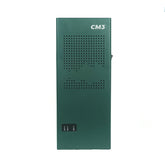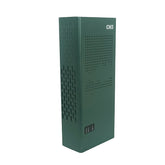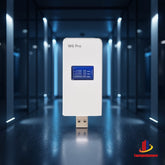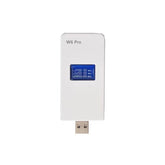What are the disadvantages of using indoor distributed mobile phone signal shielding system?
There is feedback from customers that a relatively traditional solution of the cell phone jammer in the room division method was previously installed, that is, through one or more sets of high-power hosts, the radio frequency cable is used to transmit to each area that needs to be shielded. The indoor antenna in each area transmits the signal of the mobile phone screen.
In fact, the application of this kind of scheme in new domestic projects is rare and outdated. Because there are more and more frequency bands and formats of mobile phones, and the frequency span is also large, a high-power host (the signal source of the mobile phone shielding signal), multiple frequency bands must be combined into one or two RF cables and then transmitted to each node. , this will bring several problems: first, it will cause more power attenuation, such as feeder error in the signal transmission path, adapter error, etc.; second, the number of each transmitting antenna terminal will be limited, generally no more than one or two A host is required for ten points. Third, because of the multi-band combination, the requirements for the antenna are also very high, and it is difficult for the antenna to have good standing wave emission performance at frequencies spanning several thousand MHz.

In this room-based mobile phone signal shielding system solution, the host is a high-power device, but after multi-level distribution, to each antenna terminal, the final effect is only similar to the effect of the cellular layout of conventional low-power signal shielding machines.
In fact, the disadvantages of this scheme are other aspects, such as: the construction is complex and difficult (requires drilling holes in the wall and wiring), for example, if a host is connected to 10 antennas, the power allocated to each antenna is not necessarily equal and equal. Yes, usually the closer the power will be allocated the larger, the farther the power will be smaller.













